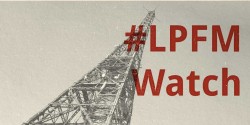For the first time, the FCC just granted booster stations to two LPFMs in California. Like the name implies, a booster helps a station to fill in parts of its broadcast area where geographic impediments–like hills or mountains–prevent the signal from being received well where it otherwise should be heard. Unlike a translator repeater station, boosters operate on the same frequency as the primary station.
This move is notable because previously the Commission had prevented LPFM stations from having boosters, ruling that the booster essentially constituted a second station. Unlike with other classes of stations, organizations may own only one LPFM, and an LPFM may not be co-owned with another radio station—with a few exceptions for Tribal stations and student-operated LPFMs at colleges and universities. However, LPFMs are permitted to own up to two translator stations, which are only permitted to repeat the broadcast of the primary station.
REC Networks is responsible for the filings which convinced the FCC to change course and grant waivers allowing the boosters. In part, REC argued that a booster should be considered equivalent to a translator station, which an LPFM is permitted to own.
While this is an exciting win for low-power FM, REC cautions that, “for 95% of the LPFM stations out there, a booster will not work.” That’s because the circumstances and terrain surrounding the two California stations that were granted waivers are unique. Moreover, quite a bit of engineering expertise is needed to make the case for a booster—more than was required to apply for the LPFM in the first place.
To help stations understand the implications of a booster station, REC put together a “FM Boosters for LPFM” fact sheet.



